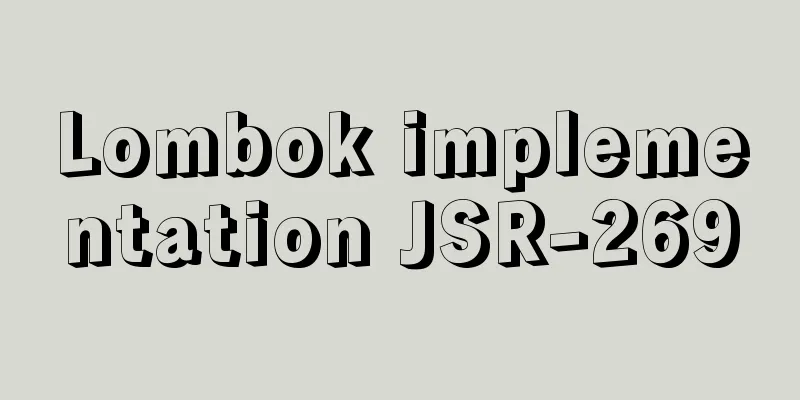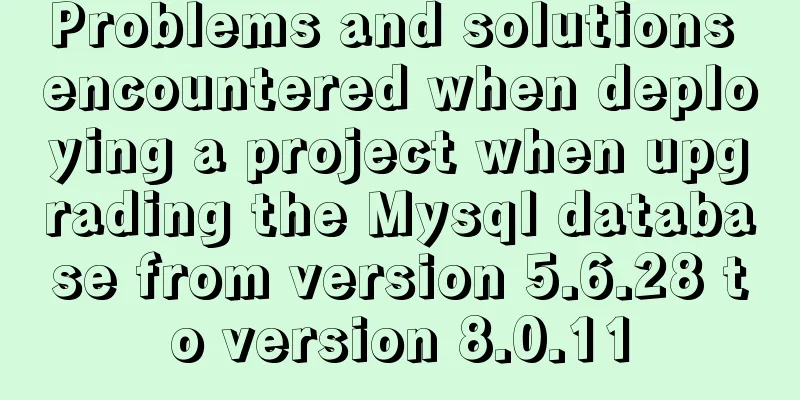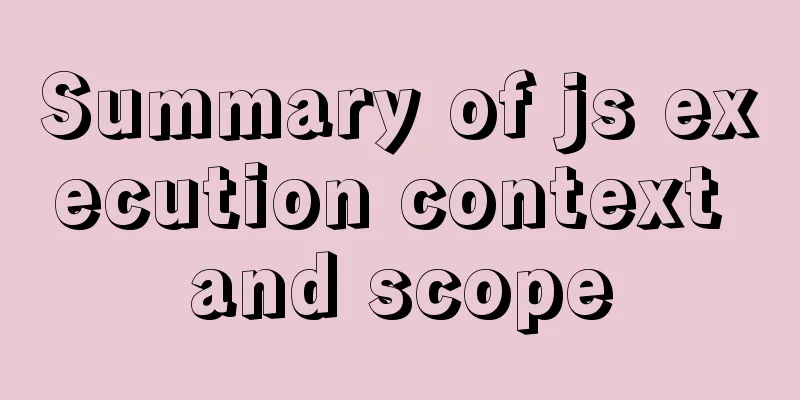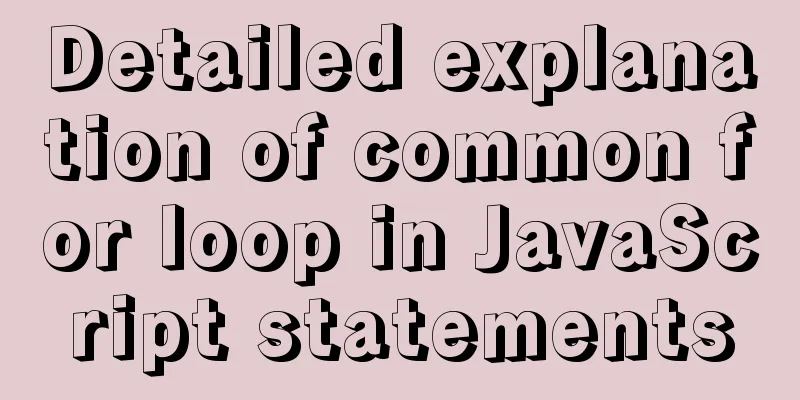Lombok implementation JSR-269

Preface Introduction Lombok is a handy tool, just like Google Guava, and is highly recommended. Every Java engineer should use it. Lombok is a Java™ utility that helps developers eliminate Java verbosity, especially for plain old Java objects (POJOs). It does this through annotations. By implementing Lombok in their development environment, developers can save a lot of time building methods such as hashCode() and equals(), as well as the time it would take to catalog various accessors and mutators. How is Lombok implemented?
import lombok.Getter;
import lombok.Setter;
@Getter
@Setter
public class UserInfo {
private String userId;
private String userName;
}Open the UserInfo.class file generated after compilation
It is found that get and set methods have been generated, from which we can infer that Lombok enhances the code at compile time. So how is the enhancement at compile time achieved? Compile phase The JSR-269 proposal was proposed and passed in JDK6. The proposal passed a set of standard APIs called "plug-in annotation processors", which can process specific annotations in the code in advance during compilation, thereby affecting the working process of the compiler.
To sum up, if you want to achieve the effect of Lombok, you only need to comply with JSR-269 and operate on AST during compilation. Of course, not only Lombok can be implemented in this way, for example, FindBug, MapStruct, etc. are also implemented in this way. accomplishJCTree JCTree is the base class of AST elements. To achieve the effect, you only need to add a JCTree node.
From the class name, you can guess what node is used. Here are a few common explanations TreeMakerMainly used to generate syntax tree nodes CodeFirst, you need to annotate the class to indicate the scope and duration of the action. The two classes correspond to Lombok's Getter and Setter respectively.
@Target({ElementType.TYPE}) //Annotation added to the class @Retention(RetentionPolicy.SOURCE) //Affects the compilation period public @interface Getter {
}
@Target({ElementType.TYPE}) //Annotation added to the class @Retention(RetentionPolicy.SOURCE) //Affects the compilation period public @interface Setter {
}To create a new abstract annotation processor, you need to inherit AbstractProcessor. Here, the template method mode is used.
public abstract class MyAbstractProcessor extends AbstractProcessor {
//Syntax tree protected JavacTrees trees;
//Build syntax tree node protected TreeMaker treeMaker;
//Create an object of identifier protected Names names;
@Override
public synchronized void init(ProcessingEnvironment processingEnv) {
super.init(processingEnv);
this.trees = JavacTrees.instance(processingEnv);
Context context = ((JavacProcessingEnvironment) processingEnv).getContext();
this.treeMaker = TreeMaker.instance(context);
this.names = Names.instance(context);
}
@Override
public boolean process(Set<? extends TypeElement> annotations, RoundEnvironment roundEnv) {
//Get the annotated class Set<? extends Element> set = roundEnv.getElementsAnnotatedWith(getAnnotation());
//Get the syntax tree set.stream().map(element -> trees.getTree(element)).forEach(jcTree -> jcTree.accept(new TreeTranslator() {
//Get the class definition @Override
public void visitClassDef(JCTree.JCClassDecl jcClassDecl) {
List<JCTree.JCVariableDecl> jcVariableDeclList = List.nil();
//Get all member variables for (JCTree tree: jcClassDecl.defs) {
if (tree.getKind().equals(Tree.Kind.VARIABLE)) {
JCTree.JCVariableDecl jcVariableDecl = (JCTree.JCVariableDecl) tree;
jcVariableDeclList = jcVariableDeclList.append(jcVariableDecl);
}
}
jcVariableDeclList.forEach(jcVariableDecl -> {
jcClassDecl.defs = jcClassDecl.defs.prepend(makeMethodDecl(jcVariableDecl));
});
super.visitClassDef(jcClassDecl);
}
}));
return true;
}
/**
* Creation method * @param jcVariableDecl
* @return
*/
public abstract JCTree.JCMethodDecl makeMethodDecl(JCTree.JCVariableDecl jcVariableDecl);
/**
* What kind of annotation to get * @return
*/
public abstract Class<? extends Annotation> getAnnotation();
}Used to process Setter annotation inheritance MyAbstractProcessor
@SupportedAnnotationTypes("com.ingxx.processor.Setter") //The annotation processor acts on which annotation. You can also rewrite getSupportedAnnotationTypes
@SupportedSourceVersion(SourceVersion.RELEASE_8) //Can handle any version and can also override getSupportedSourceVersion
public class SetterProcessor extends MyAbstractProcessor {
@Override
public JCTree.JCMethodDecl makeMethodDecl(JCTree.JCVariableDecl jcVariableDecl) {
ListBuffer<JCTree.JCStatement> statements = new ListBuffer<>();
//Generate function body this.name = name;
statements.append(treeMaker.Exec(treeMaker.Assign(treeMaker.Select(treeMaker.Ident(names.fromString("this")), jcVariableDecl.getName()),treeMaker.Ident(jcVariableDecl.getName()))));
JCTree.JCBlock body = treeMaker.Block(0, statements.toList());
//Generate method return treeMaker.MethodDef(
treeMaker.Modifiers(Flags.PUBLIC), //Access flag getNewMethodName(jcVariableDecl.getName()), //Name treeMaker.TypeIdent(TypeTag.VOID), //Return type List.nil(), //Generic parameter list List.of(getParameters(jcVariableDecl)), //Parameter list List.nil(), //Exception list body, //Method body null //Default method (may be the default in interface)
);
}
@Override
public Class<? extends Annotation> getAnnotation() {
return Setter.class;
}
private Name getNewMethodName(Name name) {
String fieldName = name.toString();
return names.fromString("set" + fieldName.substring(0, 1).toUpperCase() + fieldName.substring(1, name.length()));
}
private JCTree.JCVariableDecl getParameters(JCTree.JCVariableDecl prototypeJCVariable) {
return treeMaker.VarDef(
treeMaker.Modifiers(Flags.PARAMETER), //Access flag prototypeJCVariable.name, //Name prototypeJCVariable.vartype, //Type null //Initialization statement);
}
}Used to process Getter annotations inherited from MyAbstractProcessor
@SupportedAnnotationTypes("com.ingxx.processor.Getter") //The annotation processor acts on which annotation. You can also rewrite getSupportedAnnotationTypes
@SupportedSourceVersion(SourceVersion.RELEASE_8) //Can handle any version and can also override getSupportedSourceVersion
public class GetterProcessor extends MyAbstractProcessor {
@Override
public JCTree.JCMethodDecl makeMethodDecl(JCTree.JCVariableDecl jcVariableDecl) {
ListBuffer<JCTree.JCStatement> statements = new ListBuffer<>();
//Generate function body return this.Field name statements.append(treeMaker.Return(treeMaker.Select(treeMaker.Ident(names.fromString("this")), jcVariableDecl.getName())));
JCTree.JCBlock body = treeMaker.Block(0, statements.toList());
//Generate method return treeMaker.MethodDef(treeMaker.Modifiers(Flags.PUBLIC), getNewMethodName(jcVariableDecl.getName()), jcVariableDecl.vartype, List.nil(), List.nil(), List.nil(), body, null);
}
@Override
public Class<? extends Annotation> getAnnotation() {
return Getter.class;
}
private Name getNewMethodName(Name name) {
String fieldName = name.toString();
return names.fromString("get" + fieldName.substring(0, 1).toUpperCase() + fieldName.substring(1, name.length()));
}
}Compiling an existing class javac -cp $JAVA_HOME/lib/tools.jar *.java -d . Create a new test class. In IDEA, an error will be reported because the get set method cannot be found. You can ignore it.
@Getter
@Setter
public class UserInfo {
private String userId;
private String userName;
public static void main(String[] args) {
UserInfo userInfo = new UserInfo();
userInfo.setUserId("001");
userInfo.setUserName("Dewu");
System.out.println("id = "+userInfo.getUserId()+" name = "+userInfo.getUserName());
}
}Then compile //Multiple processors are separated by commas javac -processor com.ingxx.processor.GetterProcessor,com.ingxx.processor.SetterProcessor UserInfo.java -d . Check the compiled file and find that get and set methods have been generated
The above is the details from Lombok to JSR-269. For more information about JS reflection mechanism, please pay attention to other related articles on 123WORDPRESS.COM! You may also be interested in:
|
<<: Detailed analysis of MySQL instance crash cases
>>: How to run commands on a remote Linux system via SSH
Recommend
Manually implement js SMS verification code input box
Preface This article records a common SMS verific...
Some useful meta setting methods (must read)
<meta name="viewport" content="...
How to create a database in navicat 8 for mysql
When developing a website, you often need to use ...
The most commonly used HTML tags to create web pages
1. Optimization of commonly used HTML tags HTML s...
Summary of several APIs or tips in HTML5 that cannot be missed
In previous blog posts, I have been focusing on so...
How to split and merge multiple values in a single field in MySQL
Multiple values combined display Now we have th...
Detailed steps to enable SourceGuardian (sg11) encryption component on Linux virtual hosts
Note: sg11 Our company only supports self-install...
Use CSS to prevent Lightbox to realize the display of large image code without refreshing when clicking on small image
Use CSS to prevent Lightbox to realize the displa...
Docker container regularly backs up the database and sends it to the specified mailbox (design idea)
Table of contents 1. Background: 2. Design ideas:...
About WSL configuration and modification issues in Docker
https://docs.microsoft.com/en-us/windows/wsl/wsl-...
Implementation of HTTP and HTTPS services with Nginx reverse proxy for multiple domain names
Currently, Nginx has reverse proxyed two websites...
Example of Html shielding right-click menu and left-click typing function
Disable right-click menu <body oncontextmenu=s...
JS removeAttribute() method to delete an attribute of an element
In JavaScript, use the removeAttribute() method o...
JavaScript to achieve simple image switching
This article shares the specific code for JavaScr...
How to implement Docker to dynamically pass parameters to Springboot projects
background Recently, some friends who are new to ...













